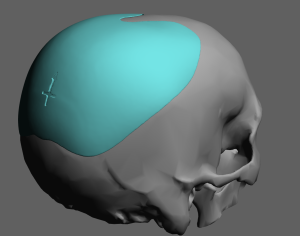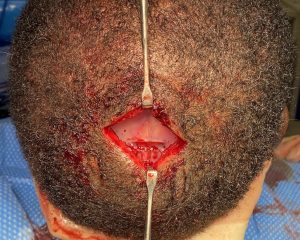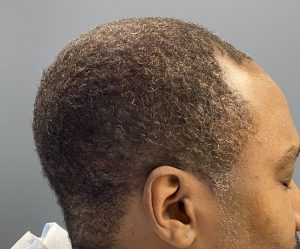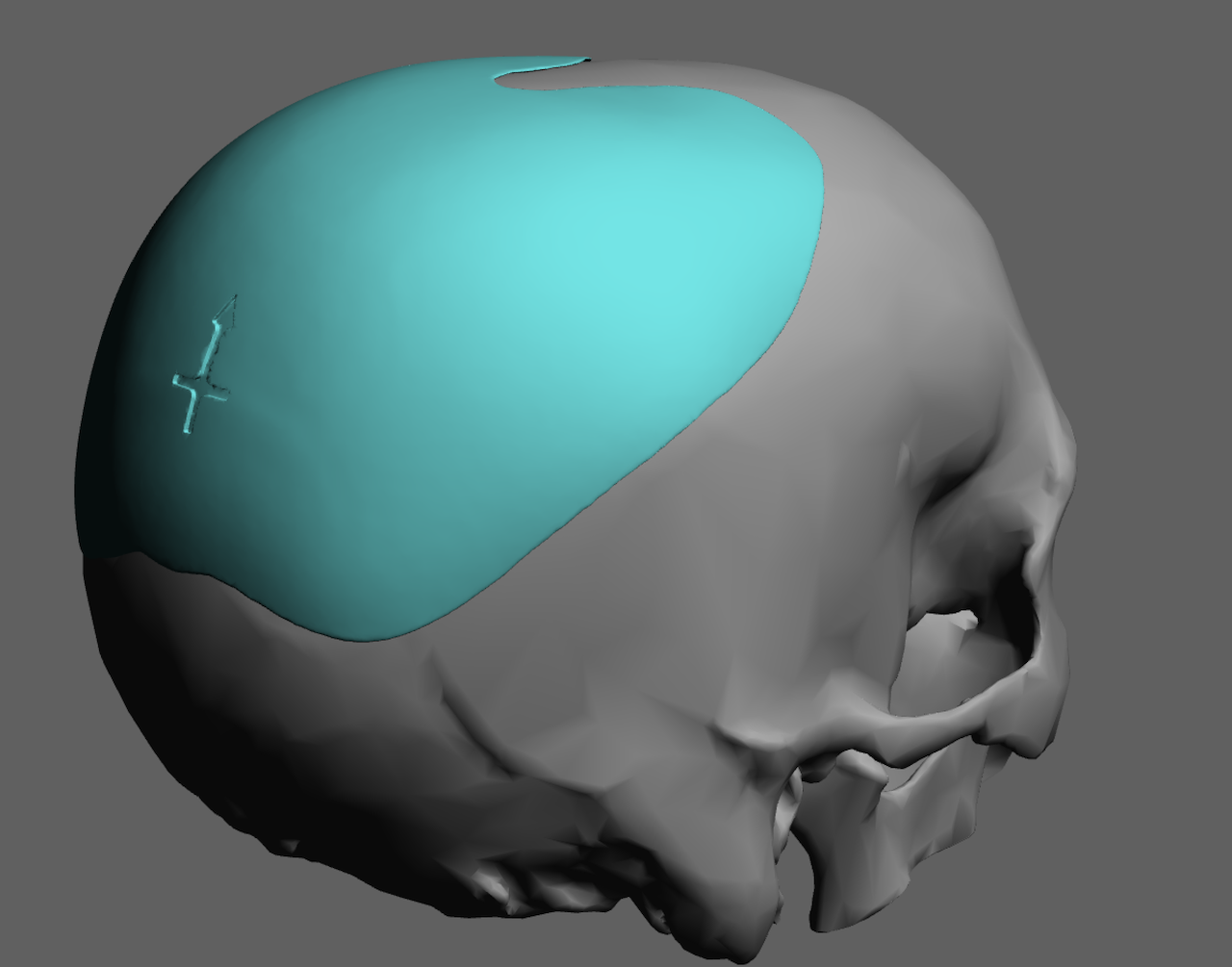Background: While the shape of the skull is generally round over most of its surfaces, this round shape can be affected by a variety of congenital sources. Premature fusion of the cranial sutures and external deformation forces are the most common reasons abnormal (non-round, flat or concave) skull shapes occur.
One of the most under appreciated reasons for flatter areas of the skull is located at the original posterior fontanelle area. The largest of the soft spots of the skull that all babies have it originally is an open ares between the developing skull bones that eventually fills in with bone and fuses together creating a round curvature to the back of the head. In rare instances the posterior fontanelle does not fill in completely and remains a small open area. But more commonly the bony fill is not quite as thick as the surrounding skull and an indentation or flat area results.
With a flatter posterior fontanelle area the natural curvature of the back of the head is disrupted which is best seen n profile. While of no functional significance it can be a source of aesthetic disatisfaction particularly in the male with a shaved head or closely cropped hair where it becomes more visible.



Closure and ossification of the original posterior fontanelle area on a baby’s skull plays a major role in the formation of the shape of the crown of the head. Unlike the smaller anterior fontanelle area the posterior fontanelle occurs around a curve of the skull. Incomplete closure and various amounts of ossification of the area will affect the shape of this skull curve. Most commonly, as seen in this patient, the bone may have a near normal thickness but it has a flatter shape. Evidence of ‘difficulty’ with bone closure is seen by the central small bone defect.
Case Highlights:
1) One unique and not uncommon type of aesthetic skull deformity is over the congenital posterior fontanelle or the crown of the skull.
2) A custom skull implant can be designed to complete the roundness over the flattened upper back of the head.
3) Placed through a small scalp incision at the bottom of the crown of the skull a much larger skull implant can be placed through it than thought possible due to the elastic deformation property of the material.
Dr. Barry Eppley
World Renowned Plastic Surgeon








